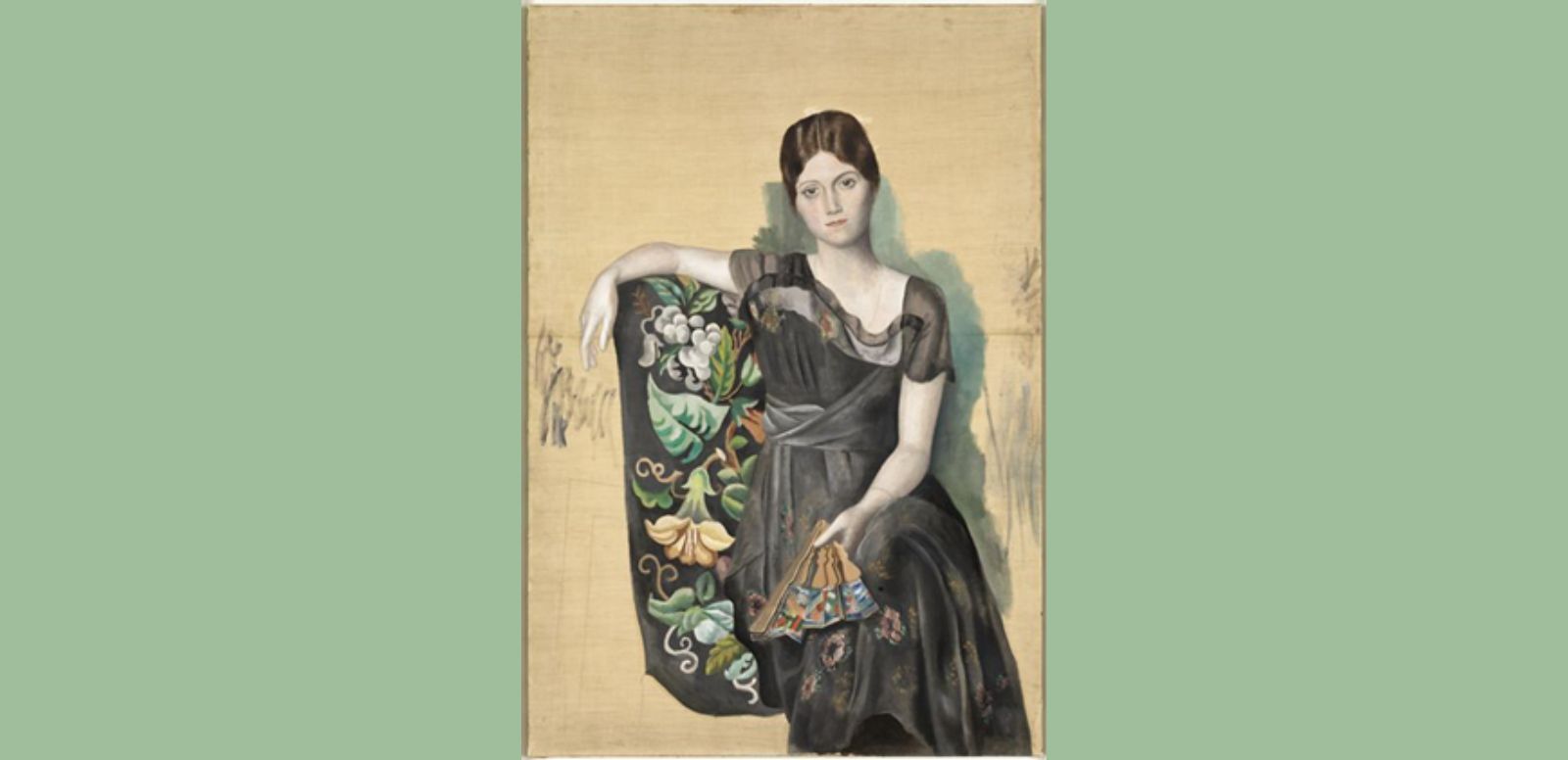
Museo Nacional Picasso-París
© Sucesión Picasso, VEGAP, Madrid, 2023
During his stay in Rome with the Ballets Russes in February 1917, Picasso met the ballerina Olga Kokhlova, with whom he fell in love. In the course of the ten years they were together many works were born, both naturalistic and cubist, often with Olga as a model. In fact, the depictions of Olga vary depending on the obstacles the couple was going through.
Portrait of Olga in an Armchair (1918), executed in the spring of 1918 in Paris, reflects the impact of Picasso's travels to Italy and his visits to the Louvre. Inspired by Antiquity, Picasso portrays Olga with a Greek touch, geometric lines and a serene pose. The piece was made from a photograph of the couple's home on rue de La Boétie in Paris.
Picasso goes beyond physical representation. He seeks Olga's essence, separating her physically from the viewer, but connecting her emotionally. Together with the armchair she seems to float in a non-existent space, adding a layer of emotional complexity to the work.
The painting reflects the "return to order" that marked post-war art, characterized by warm colors, round bodies and serene faces. The use of vivid colors and meticulous attention to detail reveal a new elegance in Picasso's art. Every element, from the transparent dress to the ornate armchair, contributes to a unique visual balance.
Portrait of Olga in an Armchair (1918) is not only a testament to Picasso's technical mastery; it is a key piece in understanding the complexity of his personal relationships and his unique ability to translate emotions into brushstrokes. This work, framed in the history of his relationship with Olga and the artistic trends of his time, remains a jewel of 20th century art.
Sources:
Musée national Picasso-París:
https://www.museepicassoparis.fr/fr/portrait-dolga-dans-un-fauteuil
Museo Picasso Málaga:
https://www.museopicassomalaga.org/exposiciones/olga-picasso

